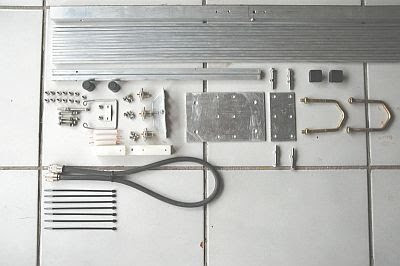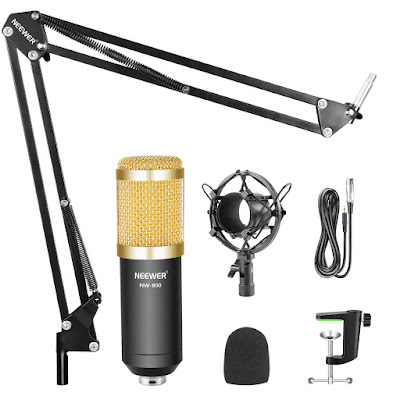Die MP3 audio weergawe van die artikel kan HIER afgelaai word.
Die afgelope Saterdag, 22 Junie 2019 om 9vm was weer ‘n genotvolle en suksesvolle byeenkoms vir radio amateurs in George by Root-Koffie.
Die “venue” was uiters geskik, aangenaam en ideaal vir gewone asook koue dae met ‘n swart gietyster stofie wat die lokaal net op die regte hittevlak gehou het. Baie dankie aan Francois ZS1Q en Danie ZS1DBJ wat die nodig aanvoerwerk en reelings getref het om by Root te kon koffie drink.
Die byeenkoms was bygewoon deur 12 radio amateurs die meeste nog sedert die totstandkoming van die Reboot Koffie Drink. Die Reboot Amateur Radio WhatsApp groep en sy aktiwiteite is beskikbaar vir alle- en voornemende radio amateurs in Suid Afrika. Sluit gerus by ons aan op die groep en wees deel van hierdie dinamiese groep radio amateurs.
Ek het besluit om slegs ‘n kriptiese oorsig te lewer van die geleentheid. So as jy nie die geleentheid kon bywoon nie gaan jy ongelukkig nie die fynere detail kry oor die samekoms nie. Die rede vir die besluit is heel eenvoudig. Ons soek almal in lewende lywe by die Reboot Koffie Drink. Woon die geleenthede by en kry al die fynere detail tydens die samekoms. Ek praat nie eers van die goeie gesindheid en kameraderie by die byeenkomste nie. Die samekoste het hulself nou al bewys as nie amateur radio polities van aard nie en met geen persoonlike menings verskille of onaangenaamhede nie!!
Hier volg ‘n kort opsomming van Saterdag se gebeure:
Nadat almal die nodige verslaafde koppie koffie aangekoop het en hulle plekke ingeneem het, het ons sonder enige seremonie of formaliteite die byeenkoms afgeskop, maar meer hieroor later.
Die volgende persone was teenwoordig: Dave ZR1OAC, Hennie ZS1IK, Willie ZS2CC, Llewellyn ZS003, Saney ZR1S, Johann ZS2BVD, Andre ZS1AFB, Johan ZS1WD, Conrad ZS1KG, Francois ZS1Q, John ZS1ZR en Johan ZS1I. Die volgende persone het verskoning aangebied: Thys ZS1TBP, Kobus ZS2BBB, Nick ZS1N, Jimmy ZS1RB, Danie ZS1DBJ, Abe ZS1ZS en Mari ZS1MEH.
Na verwelkoming is almal teenwoordig bedank vir die moeite wat hul gedoen het om die byeenkoms by te woon in die gure weersomstandighede wat toe nou ook nie so onaangenaam was nie. Ek het besluit dat daar geen Reboot Amateur Radio aangeleenthede bespreek gaan word nie. Die Reboot Koffie Drink is immers ‘n informele geleentheid en nie ‘n formele vergadering van een of ander aard nie. Daar is dan ook sommer dadelik weggespring met die gewilde “Rondomtalie/Round Robin” mini lesings/demonstrasies en lekker gesels. Net soos in die verlede het elkeen wat kom koffie drink het gretig deelgeneem aan die Rondomtalie self die nuwe en ou gesigte wat die eerste keer teenwoordig was.
Hier volg ‘n kriptiese samevatting tov van die “Rondomtalie/Round Robin”:
- Francois ZS1Q George – Amateur radio almanak van vroeer jare - PEARS VHF/UHF Analoog Kompetisie deelname vanuit die Suid Kaap.
- John ZS1ZR George – John was verantwoordelik dat die manne se lagspiere oefening gekry het. Dankie daarvoor John dit het die manne sommer lekker laat lag en ons kort van meer lag – VHF Radio in die Suid Kaap.
- Johan ZS1I Mosselbaai – Saambring van 2m/70cm Draagbare Radios -Analoog UHF 70cm Eksperimentele 10mW baken – Propogasie 2m/70cm.
- Hennie ZS1IK George – Oorsig van Amateur Radio Aktiwitiete – 2m Mobiele Werking – Luister vir Hennie op die 145.700 Herhaler. - Toevoeging tot die Reboot Amateur Radio WhatsApp groep.
- Willie ZS2CC George - Aktiwiteite op die HF bande – 80m Band is huidiglik “kookwater” dag en nag – 6m Band openinge – 11m Band openinge - HF Verslag.
- Llewellyn ZS003 – Reboot se IT Spesialis – Fibre Internet – Topografie van Internet Torings – Reikafstande van WiFi – WiFi tussen George en Mosselbaai – All things Internet -80dB Seine – Vrae oor WiFi.
- Johann ZS2BVD George - Raspberry PI T-Hemp logo en Park-Run - Andre ZS1AFB ontmoet Johann en vandag sit hulle altwee aan die Reboot Koffie Drink Tafel - Sterrekunde, Teleskope, Elektronika, Mikrogolf Tegnologie, Raspberry Pi en Arduino Projekte en sommer vele meer. Johan bespreek 3 projekte nl: Raspberry Pi 3+ Mini Rekenaar en 3D drukker kassie; 4 “poort” 24v na lae spanning omsetters ook gemonteer in 3D drukker kassie en die Radio Amateur se beheerde kookpan stelsel - Sien fotos in die verband.
- Saney ZR1S Wilderness - 40m Beacon Engineer and Care Taker - Willie ZS2CC Beacon Controller (Good laugh) – Summary of the 40m Beacon characteristics – The beacon is truly a “Green” Beacon – running of solar panel power – Unfortunately the beacon causes RF Pollution, HiHi. - which is fortunately a very good thing!!
- Andre ZS1AFB George – Amateur Radio in Australia – Toekomstige amateur radio planne vir die Suid Kaap – Herhalers en herhalernetwerke – Mikrogolf skottels en die Ghz bande – Toekomstige onbeperkte perseel beskikbaar vir Reboot Koffie Drink aktiwiteite – Andre die PR van die dag toe hy lid van die publiek inlig oor amateur radio na die byeenkoms. Dankie Andre!! Sien die draagbare radio ding het toe tog gewerk!!
- Johan ZS1WD Blanco – Johan (ZS1Wasgoed Draad) is terug na ‘n tydsverloop van meer as 20 jaar!! Nog besig om weer sy stasie aan die gang te kry – Afgetree – Johan bied gratis koffie aan vir alle rebooters by sy huis. Al voorwaarde is dat hulle sy gras moet sny en tuin bewerk - Dis nou ‘n bargain – HF Radio asook 2m simplex en herhalers – Johan reeds aktief op die 145.700 George herhaler. Kyk gerus uit vir Johan.
- Conrad ZS1KG Blanco - Werksverpligtinge – Weersatelliet prente en ontvangs – weersatelliet grond stasie - Conrad dankie dat jy gekom het al was dit tydens die Rondomtalie. Die feit is jy was daar en dit is wat saak maak. Jammer jy is nie in die groeps foto nie maar ek het dit eers later agter gekom.
- Dave ZR1AOC Mosselbaai – Digitale Radio - Peanut Dstar – Verstelling en toets handstel van Andre ZS1AFB tydens byeenkoms – Sukses die radio is nou ten volle operasioneel – Nou dit is wat Reboot Koffie Drink lekker maak. Sommer gou gou help die manne mekaar. Dankie, Dave!
‘n Groot dank ook aan Thys ZS1TBP wat bereid was om die 145.700 George Herhaler te beman en te monitor voor en tydens die koffie drink sessie. Thys ek weet jy sou graag teenwoordig wou wees maar het jy ‘n groter rol verfil op die herhaler. Verskeie kontakte is met Thys gemaak voor en tydens die geleentheid. Dankie Thys!!
Iets wat ek opgemerk het tydens die Koffie Drink wat ander dalk nie van weet nie. Ons het die voorreg gehad en dit is ook ‘n eerste in die Suid Kaap om twee pa’s en twee seuns by ‘n Koffie Drink saam op dieselfde tyd en plek teenwoordig te gehad het. Wat ‘n voorreg!! Willie- ZS2CC en Llewellyn Hewitt ZS003 (pa en seun). Johan- ZS1WD en Conrad Scheepers ZS1KG (pa en seun)
Teen 11 uur se kant was dit huistoe gaan tyd gewees. Weereens ‘n baie en genotvolle koffie drink sessie gewees. Weereens ‘n groot en hartlike dank aan ‘n ieder en elk wat die byeenkoms bygewoon en aan die Rondomtalie deelgeneem het. Een persoon maak nie die byeenkoms nie maar dit is julle wat die moeite doen on dit by te woon wat die geleentheid ‘n groot sukses maak. Sonder julle deelname sou die koffie drink nie suksesvol gewees het nie.
Die volgende Reboot Koffie Drink sal gehou word te Mosselbaai op die 20 Julie 2019 om 9vm. Die plek van byeenkoms sal mettertyd aangekondig word. Teken asb nou al die datum aan in julle dagboeke dat daar nie botsende belange is nie en dat jy die geleentheid kan bywoon.
73
Johan ZS1I, Mosselbaai
sawois05 AT gmail DOT com
Fotos:
Hennie ZS1IK, Willie ZS2CC en Llewellyn ZS003
Hennie ZS1IK, Willie ZS2CC en Llewellyn ZS003
Johann ZS2BVD, Saney ZR1S, Andre ZS1AFB en Johan ZS1WD
So kuier die manne
Francois ZS1Q en John ZS1ZR
Saney ZR1S, Andre ZS1AFB, Johan ZS1WD, Francois ZS1Q en John ZS1ZR
Middel: Dave ZR1OAC
Die Raspberry Pi Rekenaar in 3D kassie
So lyk die Raspberry Pi uit sy kassie
Die 24 volt na laer spanning omsetters in 3D kassie
Die 24 volt omsetter verwyder uit sy 3D kassie
Die Amateur Radio beheerde braaipan stelsel. Arduino Nano ens.
Kontrole kas van die braaipan beheerde stelsel
Ai dis darm maar lekker!!
Analoog UHF 70cm Eksperimentele 10 mW baken















































